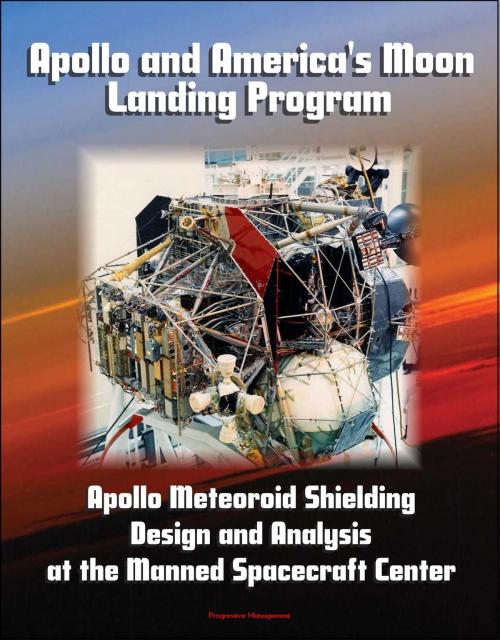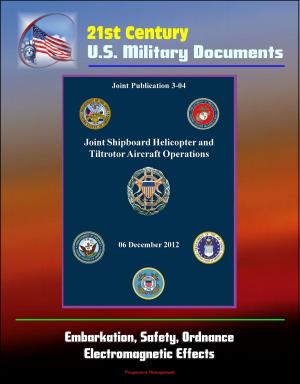Apollo and America's Moon Landing Program: Apollo Meteoroid Shielding Design and Analysis at the Manned Spacecraft Center
Nonfiction, Science & Nature, Technology, Aeronautics & Astronautics, Science, Physics, Astrophysics & Space Science| Author: | Progressive Management | ISBN: | 9781301399918 |
| Publisher: | Progressive Management | Publication: | August 10, 2013 |
| Imprint: | Smashwords Edition | Language: | English |
| Author: | Progressive Management |
| ISBN: | 9781301399918 |
| Publisher: | Progressive Management |
| Publication: | August 10, 2013 |
| Imprint: | Smashwords Edition |
| Language: | English |
The Apollo program drove the development of spacecraft meteoroid protection in the U.S. and provided the core technology used on succeeding space programs. The uncertain likelihood of a mission-ending collision with a meteoroid and the unknown consequences of a collision with particles at the very large speeds typical of meteoroids made it crucial to better understand the risk of meteoroid impact. While there are extensive records of the design and analysis of the Apollo spacecraft meteoroid shielding, the information is spread across a variety of archives and personal files. This is the first report to assemble the sources into a technical history.
As in most technical developments, there was prior work - some of which was known and used by Apollo engineers and some unknown to them. The first meteoroid impact risk assessments that U.S. engineers made were for the artificial Earth satellite preliminary design study performed at RAND Corporation in 1946. The invention fundamental to spacecraft meteoroid protection was also made at that time. Perhaps the most important prior technical developments were the hypervelocity impact test facilities built from 1955 to 1962 for Department of Defense anti-ballistic missile programs. These facilities enabled the later design and qualification of the Apollo shielding. There were prior manned spacecraft meteoroid impact risk assessments made at National Aeronautics and Space Administration in 1960 for Mercury and circa 1963 for Gemini. However, the Mercury and Gemini analyses were performed at nearly the same time the Apollo meteoroid impact risk analyses were started. The first Apollo meteoroid impact risk assessment known was B.G. Cour-Palais' February 1962 analysis of the Lunar Module (LM) preliminary design for the Apollo contract statement of work (SOW).
The Apollo program drove the development of spacecraft meteoroid protection in the U.S. and provided the core technology used on succeeding space programs. The uncertain likelihood of a mission-ending collision with a meteoroid and the unknown consequences of a collision with particles at the very large speeds typical of meteoroids made it crucial to better understand the risk of meteoroid impact. While there are extensive records of the design and analysis of the Apollo spacecraft meteoroid shielding, the information is spread across a variety of archives and personal files. This is the first report to assemble the sources into a technical history.
As in most technical developments, there was prior work - some of which was known and used by Apollo engineers and some unknown to them. The first meteoroid impact risk assessments that U.S. engineers made were for the artificial Earth satellite preliminary design study performed at RAND Corporation in 1946. The invention fundamental to spacecraft meteoroid protection was also made at that time. Perhaps the most important prior technical developments were the hypervelocity impact test facilities built from 1955 to 1962 for Department of Defense anti-ballistic missile programs. These facilities enabled the later design and qualification of the Apollo shielding. There were prior manned spacecraft meteoroid impact risk assessments made at National Aeronautics and Space Administration in 1960 for Mercury and circa 1963 for Gemini. However, the Mercury and Gemini analyses were performed at nearly the same time the Apollo meteoroid impact risk analyses were started. The first Apollo meteoroid impact risk assessment known was B.G. Cour-Palais' February 1962 analysis of the Lunar Module (LM) preliminary design for the Apollo contract statement of work (SOW).















